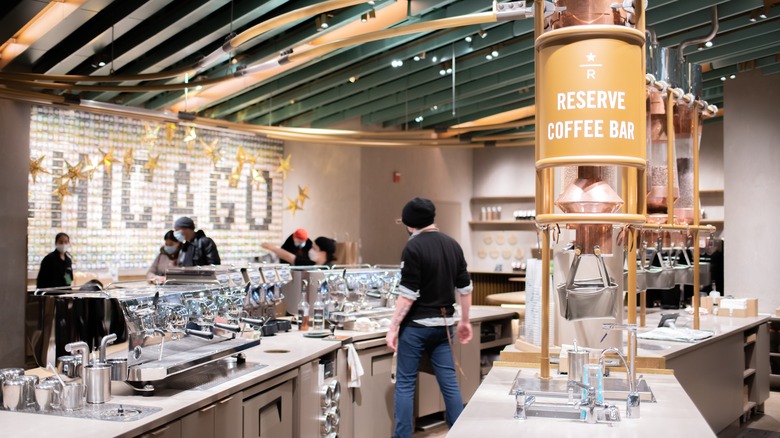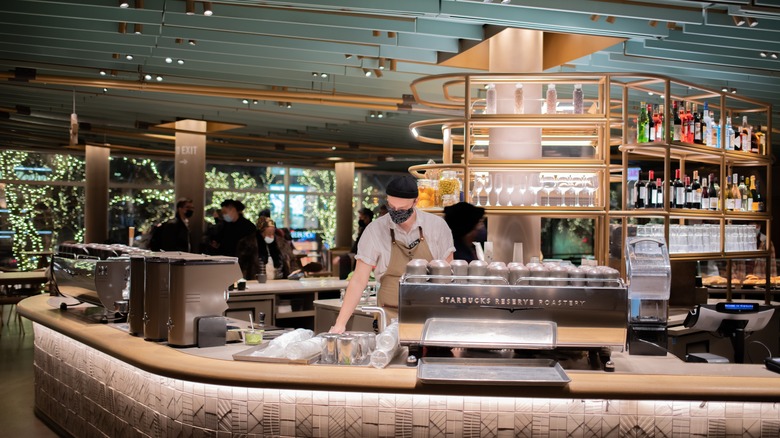Why Chicago Is So Important To Starbucks History
Chicago foodies may rave about deep-dish pizza and giardiniera, but locals know that the Second City is the number one place to grab a killer cuppa joe. Earlier this year, The Chicago Reporter said the city's local coffee scene is thriving and actively growing as "people [seek] collaborative spaces in their communities." Chi-Town coffee fans can post up with a book at the discourse-centered Rose Cafe or sip a cup of authentic Vietnamese coffee at VietFive.
If cozy smaller cafes aren't really your taste (pun intended), Chicago is also home to the world's largest Starbucks store: Starbucks opened its sixth Starbucks Reserve location in the Windy City in 2019. It spans 35,000 square feet and five stories, and it's outfitted with a roasting facility, a bakery, a cocktail bar, an Experiential Coffee Bar for tasting, and the first curved escalator in the Midwest.
The store is impressive to say the least, and a huge project for the company. But, why Chicago? Isn't Starbucks supposed to be geographically linked to Seattle? Believe it or not, Chicago plays an important role in Starbucks' history.
Starbucks' first out of state endeavor
According to Starbucks, the first location opened its doors in 1971 at Pike's Place Market in Seattle. But, the coffee giant didn't expand its operations beyond the Pacific Northwest until 1987.
There were a few regional attributes that made Chicago an ideal candidate for Starbucks' expansion. Metropolitan Chicago sported a sizable downtown area, with folks searching places to gather. Plus, a cozy coffee shop would certainly be welcome against the city's infamously cold backdrop. (In the wintertime, Chicago's average temperatures sit at around 25 degrees Fahrenheit.)
The store's traction picked up exponentially in 1990 after Starbucks took on a retail expert to help boost sales. Today, there are more than 35,000 Starbucks stores running all over the world, and more than 600 of them are located in the state of Illinois, says Coffee Affection. The cocktail bar at Chicago's Starbucks Reserve even features drinks that celebrate the city's cultural history. According to local tourism platform Choose Chicago, The Roastery Boilermaker cocktail is made with cold brew and Malӧrt and the playfully named Pour-Over Bijou is inspired by Chicago's art deco architecture.
Whether you're an espresso fanatic, a Bulls fan, or just looking to get out of the cold for a few minutes, you can be sure that Starbucks will be holding down the fort in Chi-Town.

